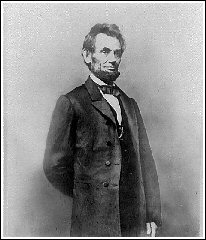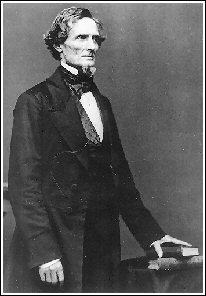Secession and Civil War
In the presidential election of 1860 the Republican Party nominated Abraham Lincoln as its candidate. Party spirit soared as leaders declared that slavery could spread no farther. The party also promised a tariff for the protection of industry and pledged the enactment of a law granting free homesteads to settlers who would help in the opening of the West. The Democrats were not united. Southerners split from the party and nominated Vice President John C. Breckenridge of Kentucky for president. Stephen A. Douglas was the nominee of northern Democrats. Diehard Whigs from the border states, formed into the Constitutional Union Party, nominated John C. Bell of Tennessee.Lincoln and Douglas competed in the North, and Breckenridge and Bell in the South. Lincoln won only 39 percent of the popular vote, but had a clear majority of 180 electoral votes, carrying all 18 free states. Bell won Tennessee, Kentucky and Virginia; Breckenridge took the other slave states except for Missouri, which was won by Douglas. Despite his poor electoral showing, Douglas trailed only Lincoln in the popular vote.

Less than a month later, on March 4, 1861, Abraham Lincoln was sworn in as president of the United States. In his inaugural address, he refused to recognize the secession, considering it "legally void." His speech closed with a plea for restoration of the bonds of union. But the South turned deaf ears, and on April 12, guns opened fire on the federal troops stationed at Fort Sumter in the Charleston, South Carolina, harbor. A war had begun in which more Americans would die than in any other conflict before or since.

Each side entered the war with high hopes for an early victory. In material resources the North enjoyed a decided advantage. Twenty-three states with a population of 22 million were arrayed against 11 states inhabited by 9 million. The industrial superiority of the North exceeded even its preponderance in population, providing it with abundant facilities for manufacturing arms and ammunition, clothing and other supplies. Similarly, the network of railways in the North enhanced federal military prospects.
The South had certain advantages as well. The most important was geography; the South was fighting a defensive war on its own territory. The South also had a stronger military tradition, and hence the region initially boasted the more experienced military leaders.
